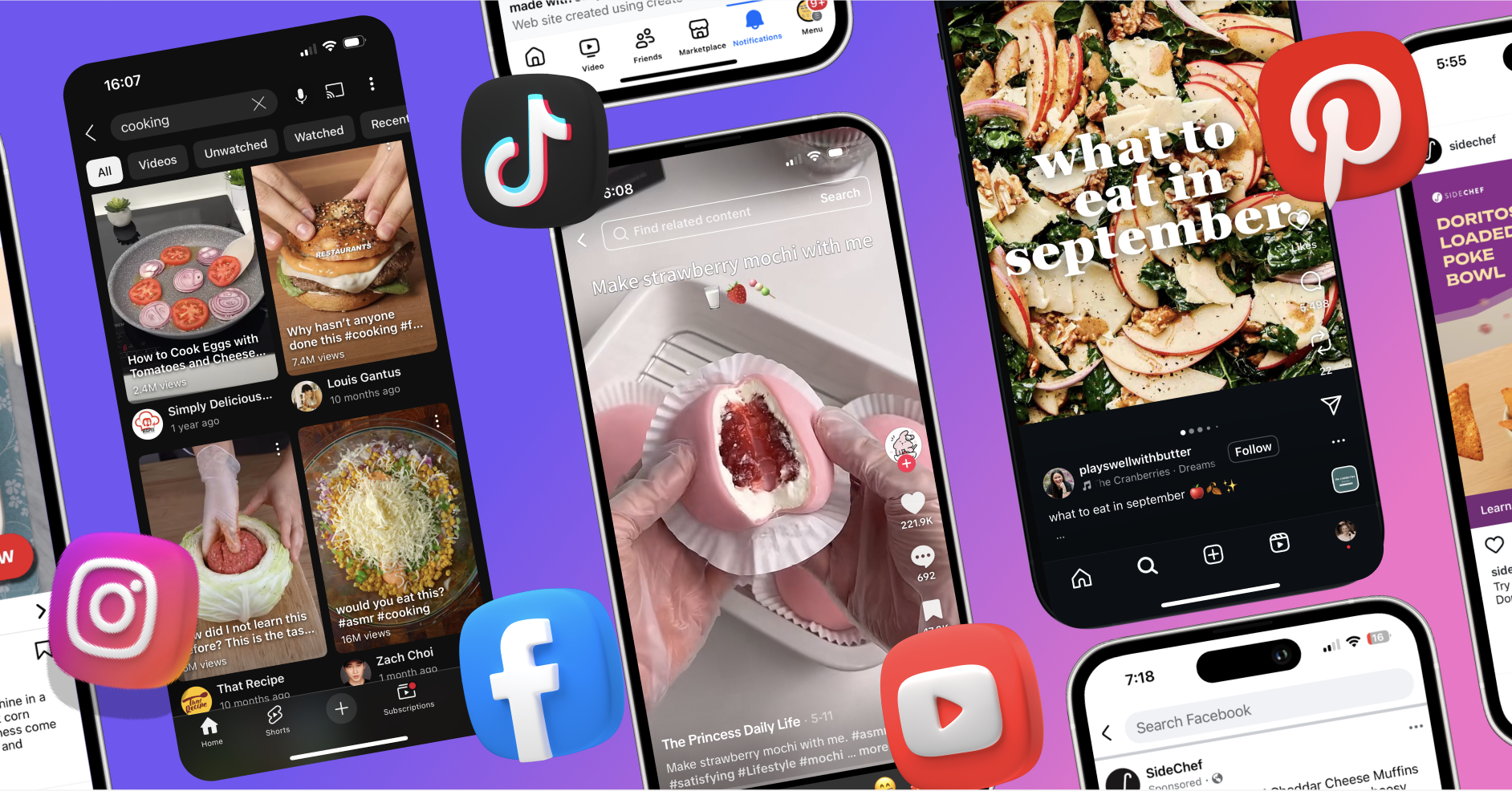
The internet has transformed how we eat, shop, and cook, and recipes are no exception. Platforms like TikTok and Pinterest are overtaking traditional cookbooks as go-to sources for inspiration. TikTok alone has generated over 4.6 million #TikTokFood posts, while Pinterest ranks “Food & Drink” among its most popular categories, according to data reported by 99firms.
This shift mirrors a broader change in home cooking, as outlined in SideChef’s overview of evolving kitchen habits, where video recipes, visual storytelling and convenience are becoming the new staples of kitchen inspiration. As digital-first habits grow, these platforms are reshaping what we cook and how we discover it.
In this article, we’ll explore recent trends in online recipes, the impact of social media platforms, and best practices for publishing your own recipes that have viral potential.
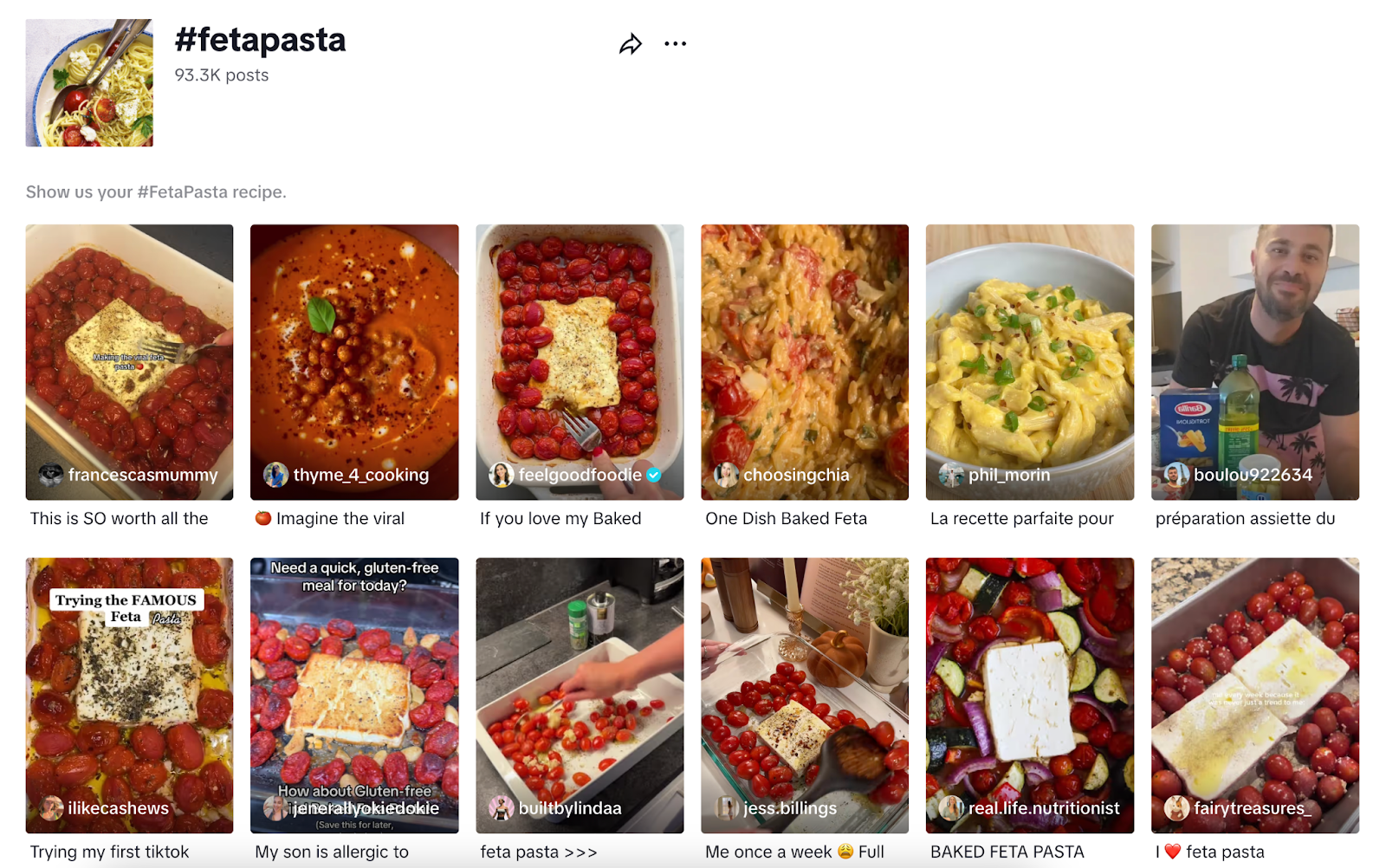
In early 2021, a Finnish food blogger’s simple recipe for baked feta and tomato pasta became a global TikTok sensation. The hashtag #fetapasta quickly racked up over 661 million views, while Instacart reported a 117% spike in block-feta cheese sales during the trend. As covered in reporting from Vogue and Allrecipes, this recipe is a prime example of how short-form content can shape real-world shopping behavior almost overnight.
#FetaPasta went viral because it was incredibly simple, visually appealing, and relied on accessible ingredients that photographed well on social media. Its creamy, colorful result made it perfect for short cooking videos, driving massive engagement across TikTok and Instagram.
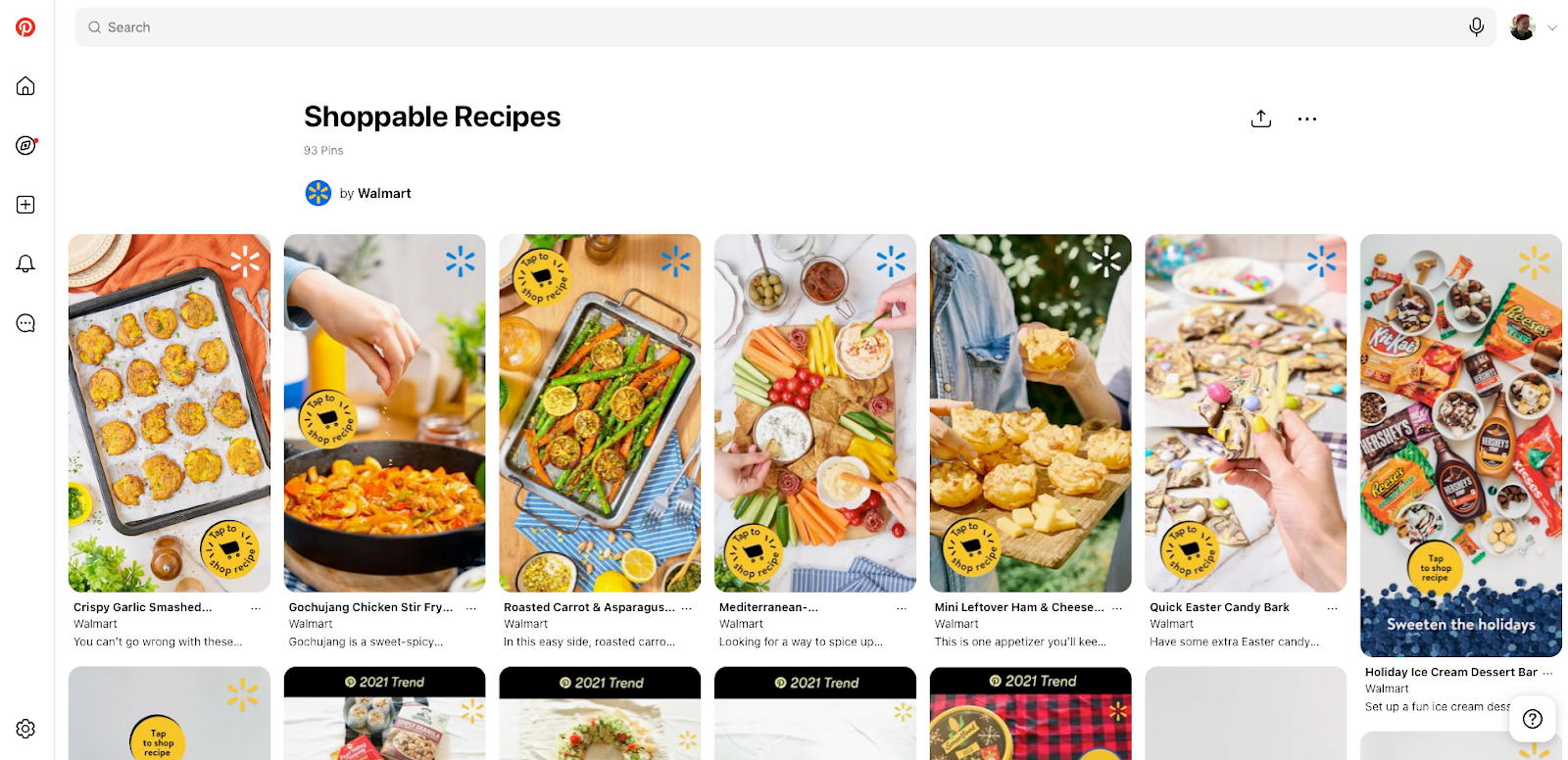
As part of a broader initiative to make meal planning easier, SideChef partnered with Walmart to launch a series of shoppable recipe collections promoted via Pinterest. Each recipe featured 10 ingredients or fewer and linked directly to Walmart’s digital cart. The integration enabled users to move from inspiration to action instantly, increasing basket sizes and improving conversion rates, as highlighted in SideChef’s shoppable recipe case study.
The Walmart and SideChef partnership on Pinterest was successful because it offered simple, shoppable recipes with 10 ingredients or fewer, perfect for busy home cooks seeking convenience. By combining inspiring food content with instant add-to-cart functionality, it turned meal ideas into easy shopping actions directly from Pinterest.
In a holiday campaign that merged branding with utility, Doritos and SideChef partnered to create bold, irresistible holiday recipes using Doritos products. The content was distributed through SideChef’s platform and partner channels, aligning recipe discovery with a playful, snackable twist.The campaign demonstrated how snack brands can tap into seasonal cooking behavior in an authentic, interactive way, as detailed in SideChef’s Doritos holiday campaign breakdown.
The Doritos and SideChef partnership succeeded because it cleverly targeted food enthusiasts through a dedicated newsletter and YouTube video series, reaching audiences already engaged with cooking content. The collaboration showcased how a familiar snack could be transformed into creative, easy-to-make dishes with just a few ingredients—making it both accessible and shareable.
From baked feta pasta to butter boards and mug cakes, viral food ideas are dominating feeds. These recipes typically feature minimal ingredients, quick prep, and a "wow" factor that makes them instantly shareable. Often aligned with hashtags like #EasyDinner or #TikTokFood, these trends emerge rapidly and spread faster during seasonal moments like back-to-school or holiday breaks. Their success is rooted in visual appeal and simplicity, making them especially popular among Gen Z and Millennials who value time-saving meals that still feel creative.
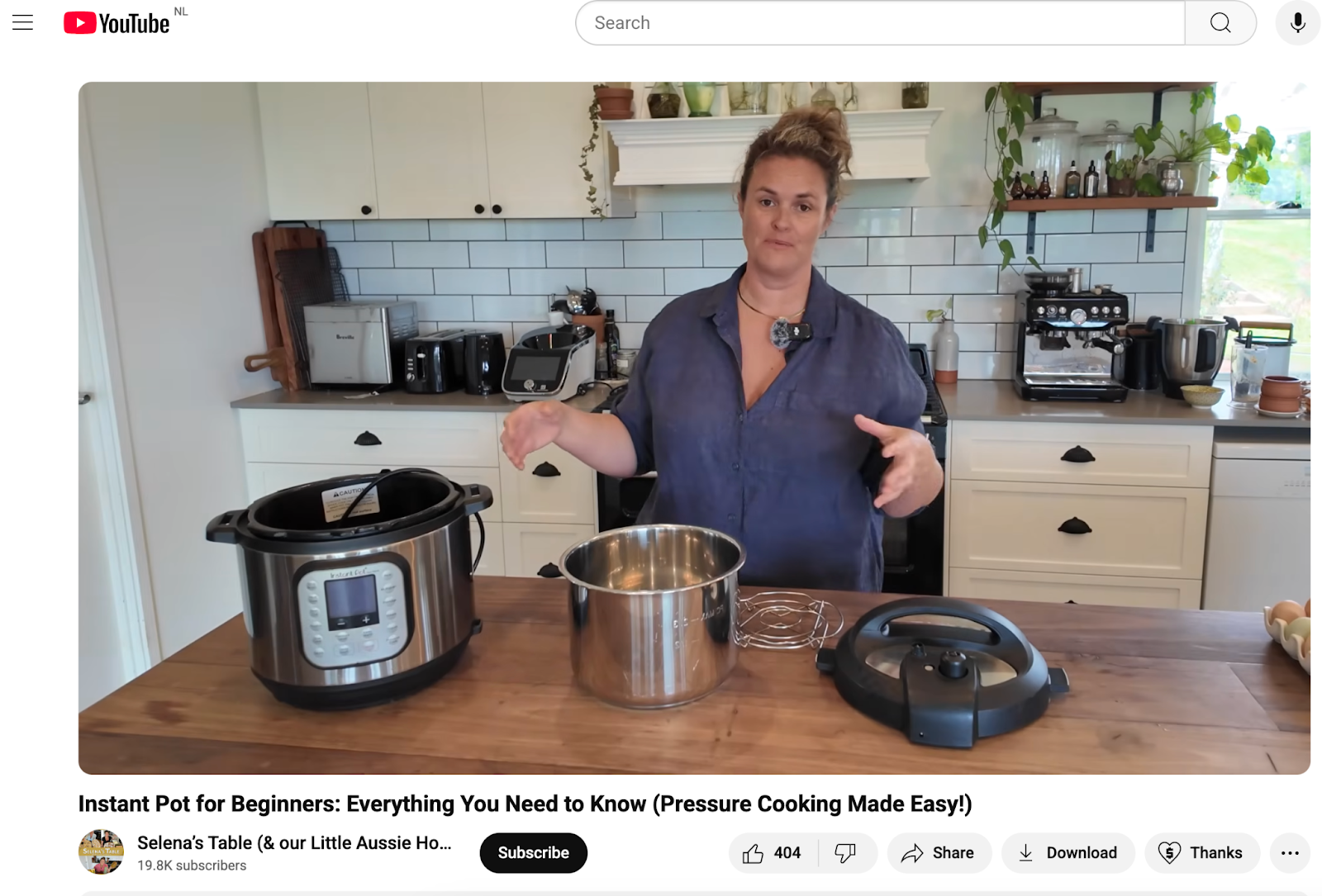
Appliance-led trends have surged thanks to the popularity of air fryers and Instant Pots. Think crispy everything, one-pot meals, and reheated leftovers turned gourmet. These tools make home-cooked meals feel convenient and satisfying without requiring professional skills. SideChef helps simplify weeknight dinners through its home cooking experience, offering step-by-step recipe guidance tailored for everyday appliances. The ability to cook full meals in under 20 minutes using a single appliance is one of the main reasons these recipes continue to trend, especially among busy households.
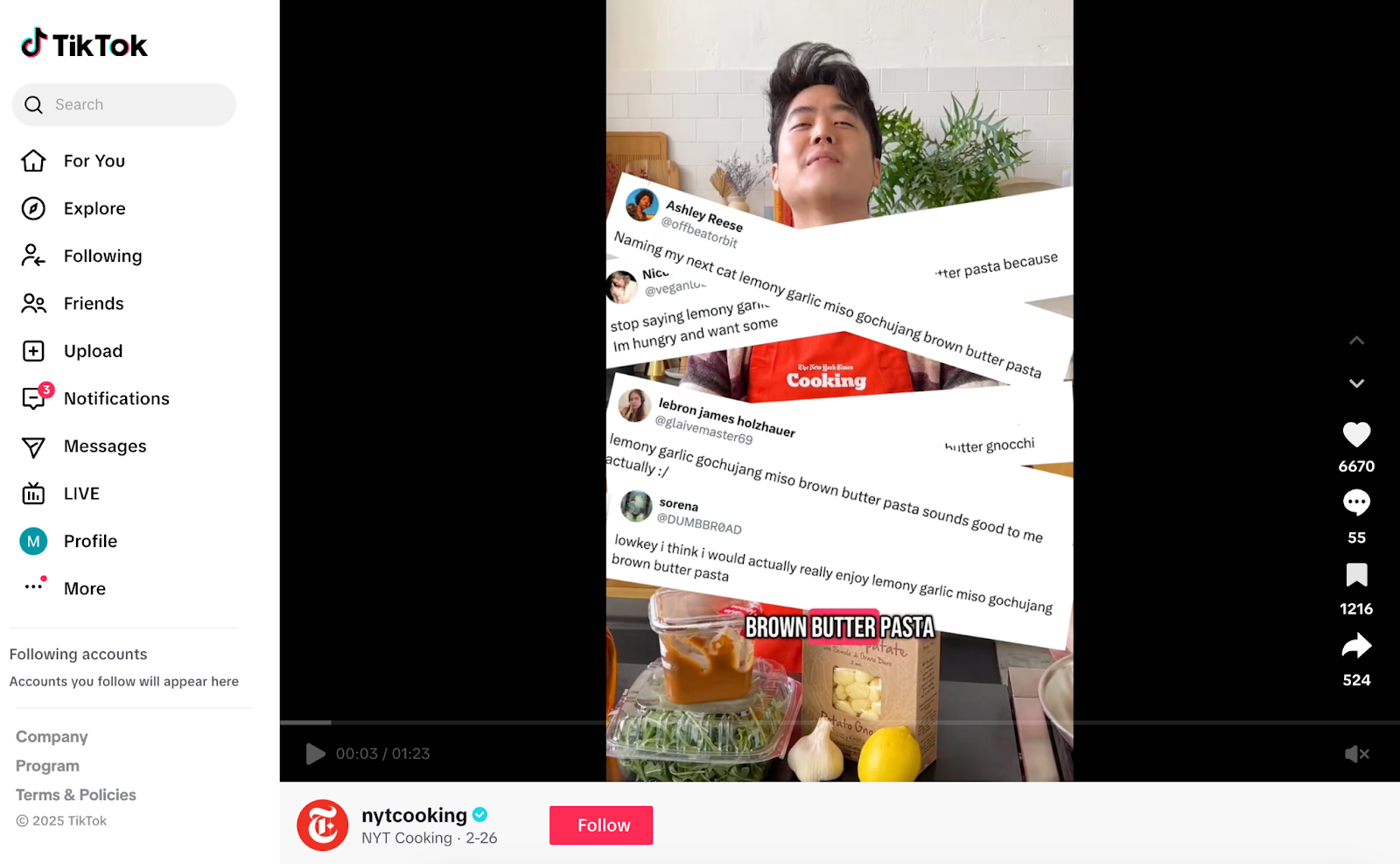
Home cooks are venturing beyond borders, exploring Korean, Middle Eastern, African, and Latin American cuisines. But they need simplified, accessible formats to experiment with these global flavors at home. Trending recipes like gochujang chicken, shakshuka, and jollof rice are making their way into everyday cooking routines. Platforms like SideChef and others are helping bridge the cultural gap through accessible global recipes, offering simplified versions and sourcing tips for niche ingredients.
Some recent global flavour trends Gen Z are loving:
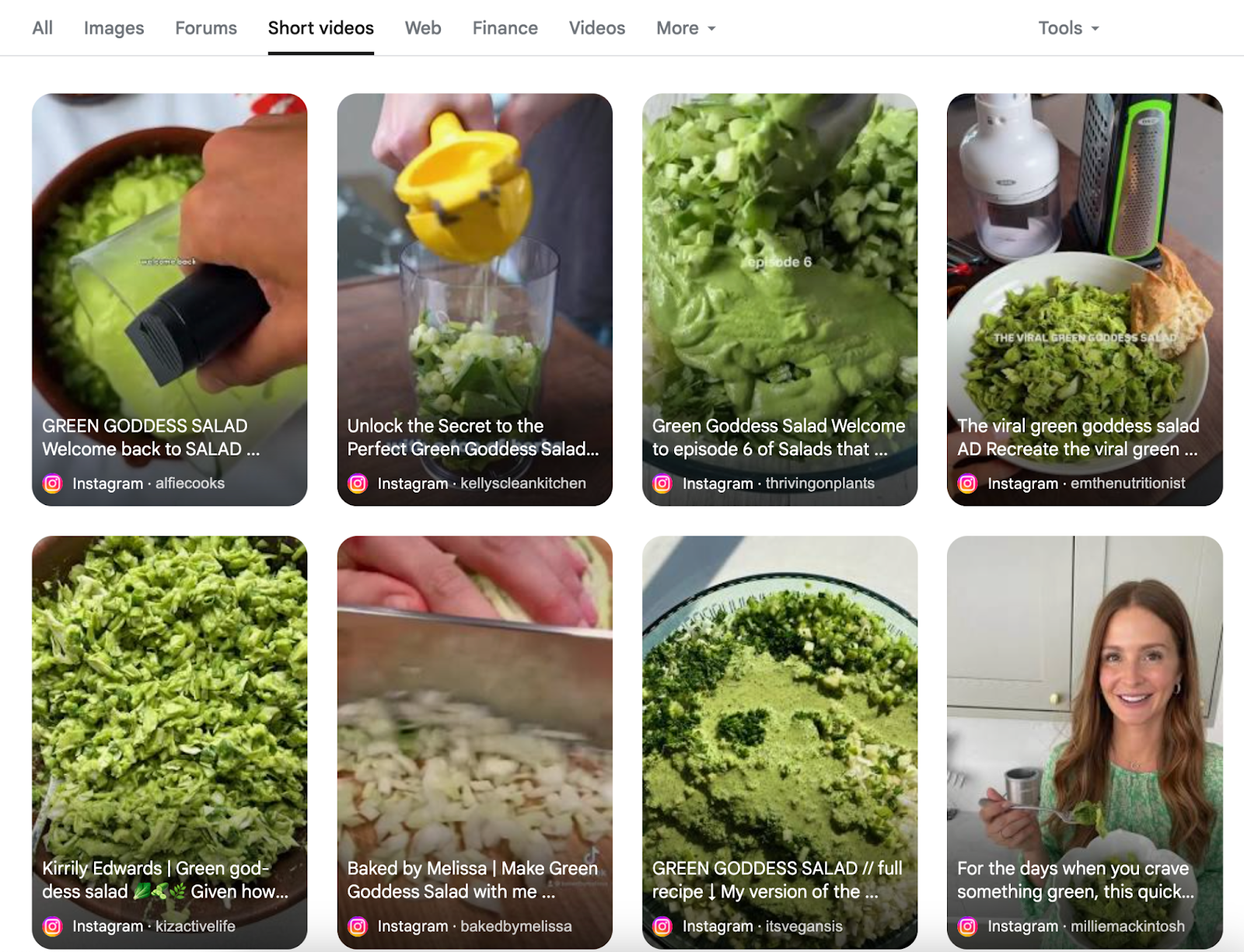
The rise of plant-based eating continues with viral interest in high-protein vegan meals, gut-friendly dishes, and flexitarian swaps. Green goddess salads, smoothie bowls, and protein oats are topping TikTok searches. These recipes often align with broader wellness goals, from digestive health to energy balance, and reflect a shift toward food that nourishes both body and lifestyle. Popular formats include:
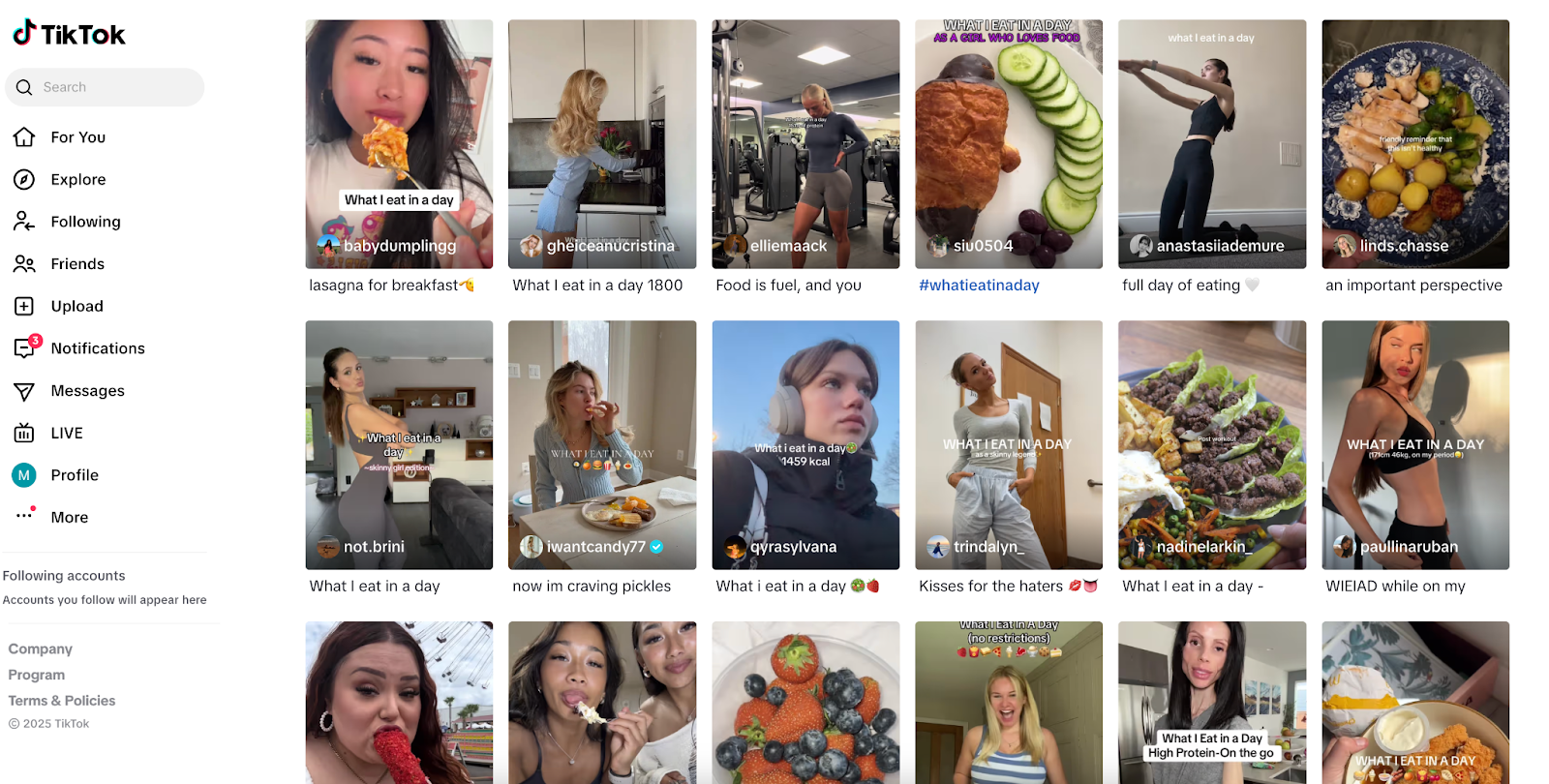
TikTok makes it easy to learn a recipe in under a minute through short-form videos. Trends like "What I Eat in a Day" and fast-paced cooking hacks shape daily meal ideas. TikTok’s algorithm pushes relatable, bite-sized content to users, making it a natural fit for recipe discovery that feels both personal and aspirational.
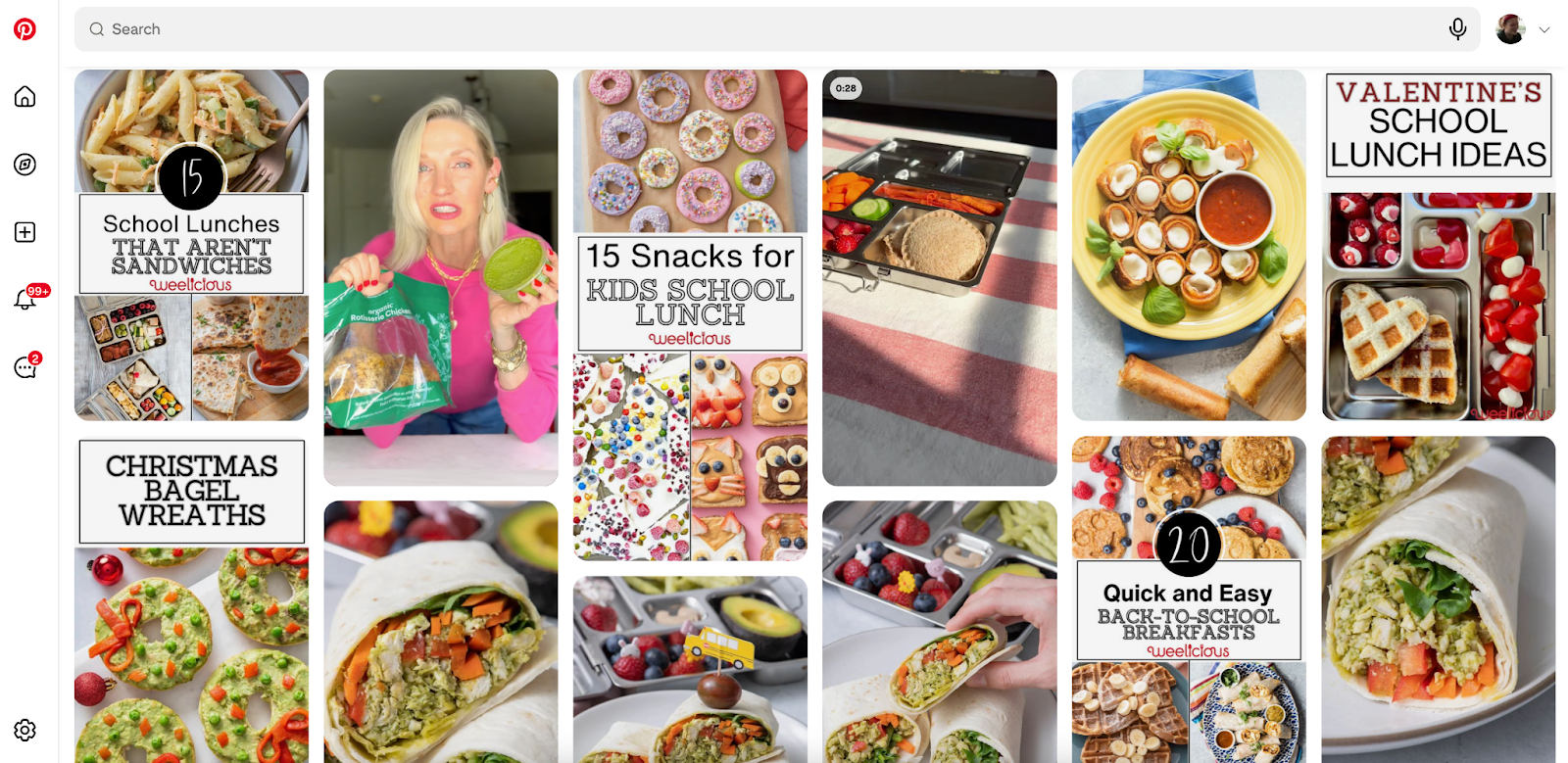
Pinterest continues to drive recipe discovery, especially around seasonal and dietary needs. Popular searches include "sheet pan dinners" and "one-pot wonders." The platform also helps users organize content into boards like “Weeknight Dinners” or “Vegan Meal Prep,” which serve as ongoing visual meal plans. Pinterest sees major traffic spikes around key holidays, signaling its continued relevance for inspiration tied to life moments.
Common user behaviors include:
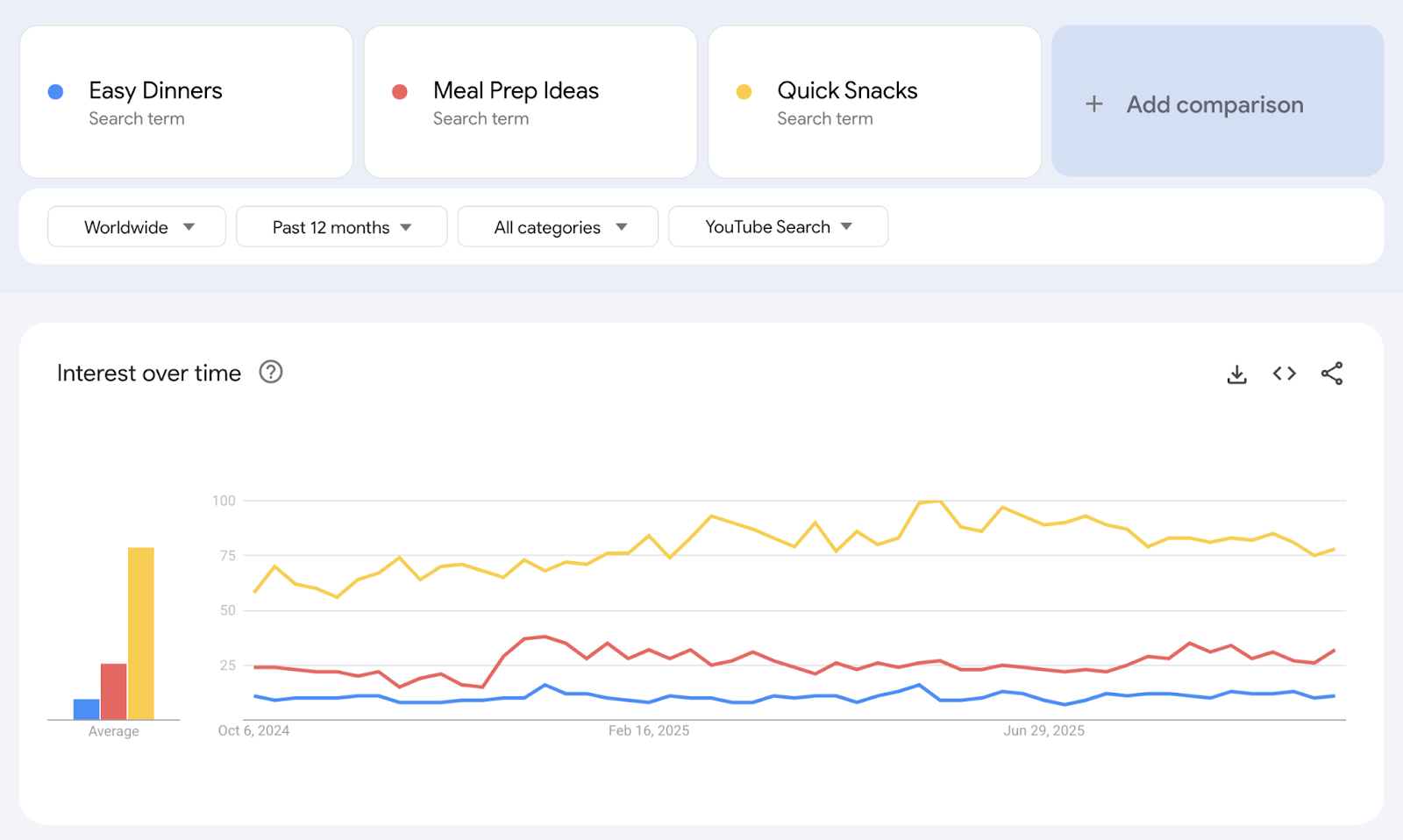
Search engines still hold strong. Queries like "easy dinners" and "meal prep ideas" bring users to high-performing blog and video content—especially those that combine step-by-step visuals. YouTube, in particular, is favored for learning techniques visually, while Google often surfaces recipes based on trending searches and SEO-optimized content.
While this may not keep you ahead of the curve, it does help ensure your content aligns with what’s already popular.
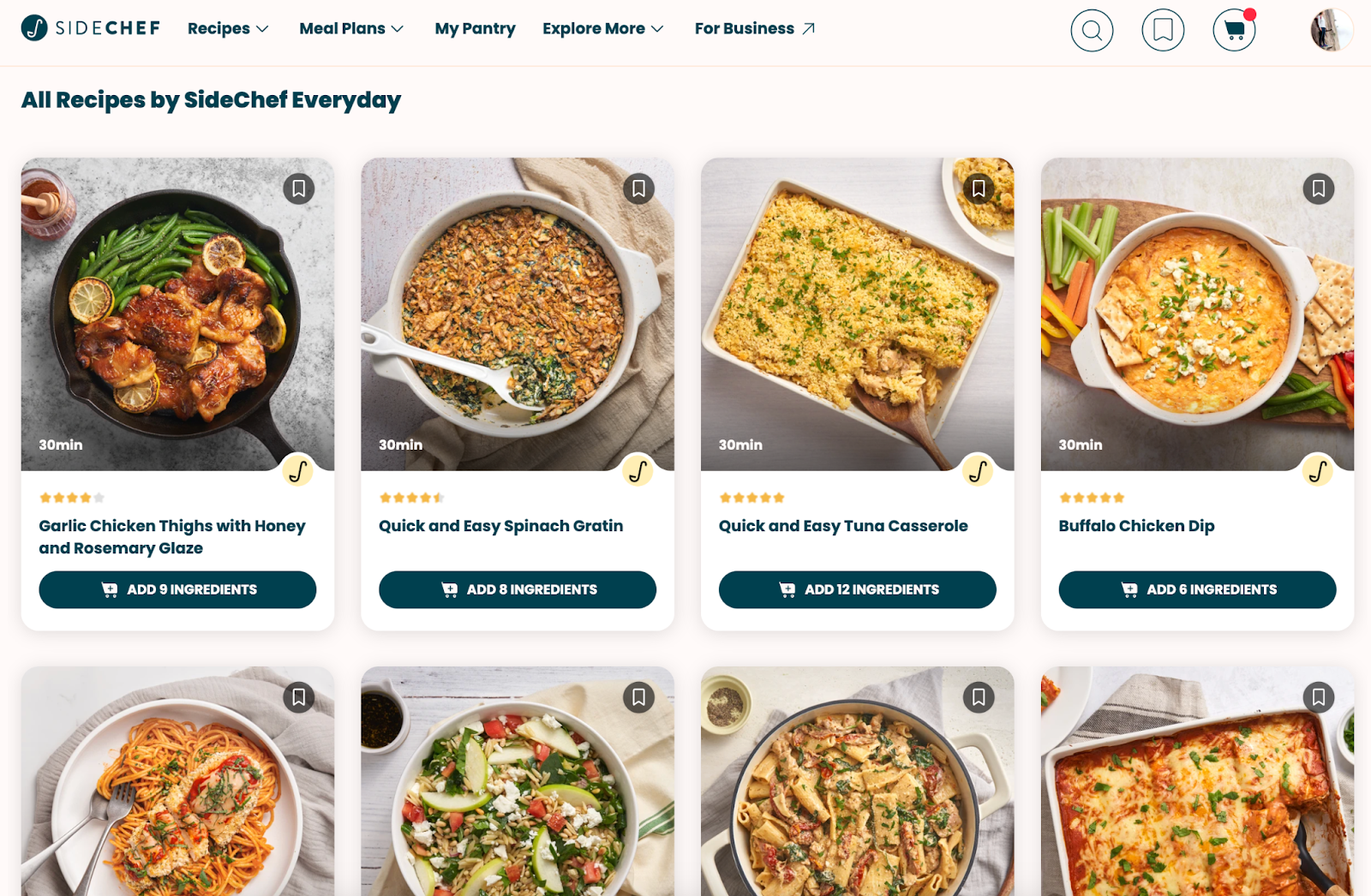
Today’s top recipes are 5-ingredient, 30-minute, no-bake wonders. They’re visually digestible and perfect for screenshotting or saving. This trend reflects the needs of time-strapped professionals, busy parents, and students looking for efficient meals without sacrificing taste or creativity. Google Trends shows year-over-year spikes in searches for “quick dinner ideas” and “easy recipes for beginners.” This is probably not just a passing trend, but a lasting pattern - so make use of this insight!
At SideChef, we tested our own collection of SideChef Everyday dinner ideas. Under 30 minutes to prepare, with less than 5 ingredients to purchase, besides your pantry items. It really was that simple of a recipe for success!
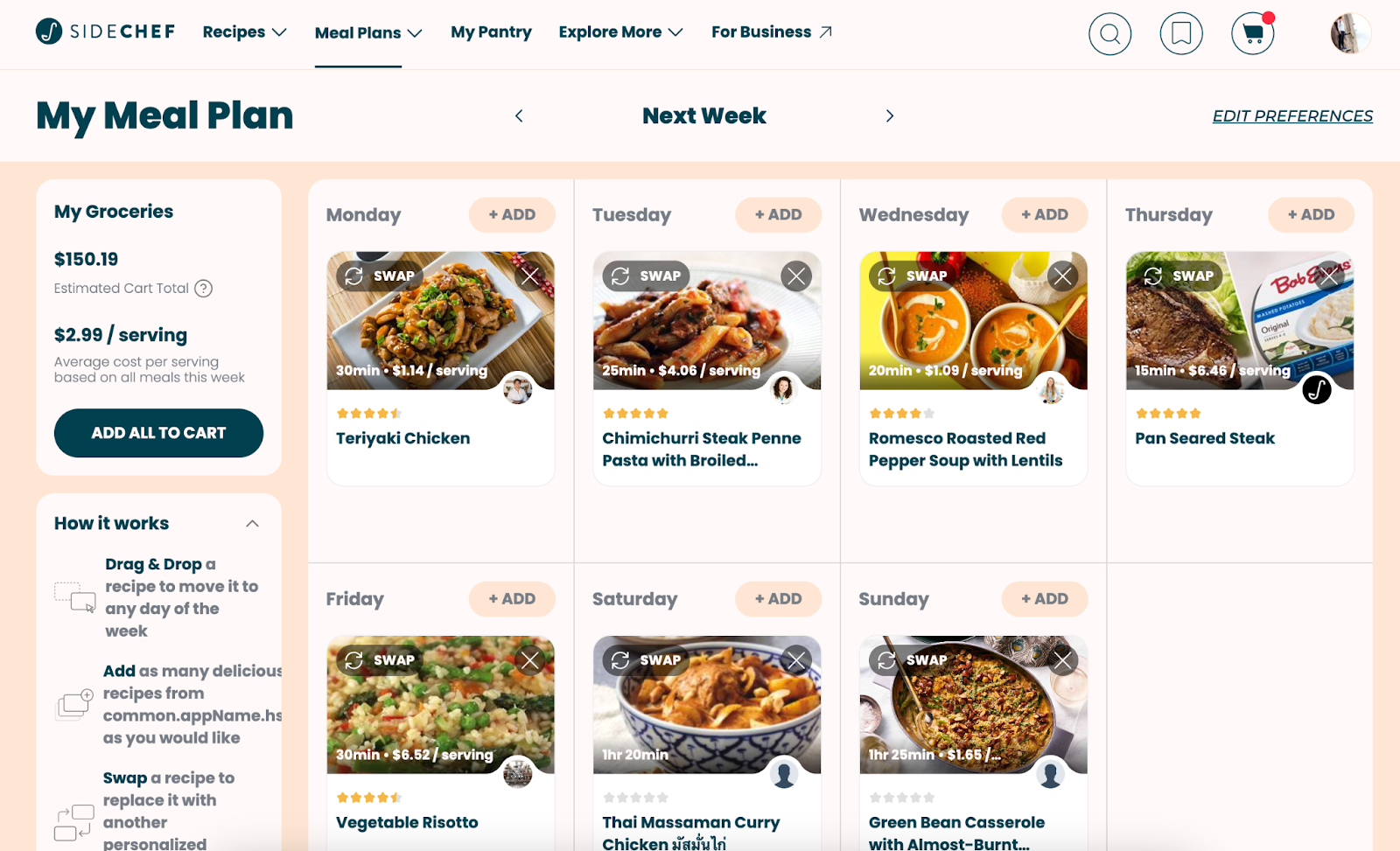
People now discover recipes before making shopping decisions. Shoppable recipes help bridge this gap by turning inspiration into action. Instead of starting with a list, users scroll social feeds, find a recipe they love, and then adapt their grocery trip around it. This shift has redefined how consumers interact with food content and plan their meals.
What does this mean for your recipe blog, account or platform? Help your users plan their weekly meals by allowing them to shop directly from the inspiration you provide. You’ll have them keep coming back if you manage to make this a smooth journey!
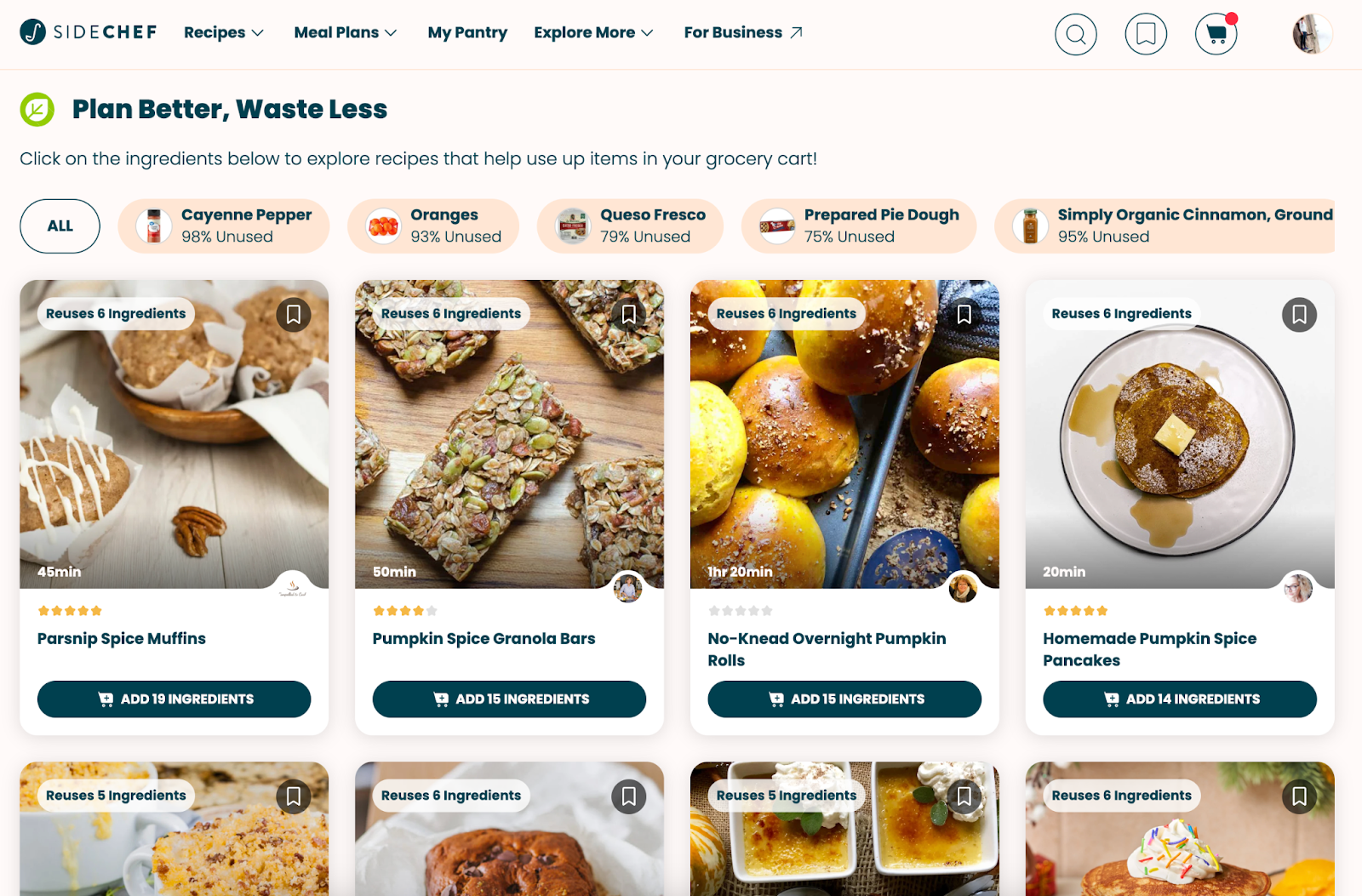
Cooking has become more flexible. Users love remixing ingredients, testing hacks, and trying "use what you have" recipes that reduce food waste. It’s not just about following instructions—it's about experimenting. This creativity also ties into sustainability, as users try to get more out of what’s already in their fridge or pantry—an idea reflected in SideChef’s approach to reducing food waste through smarter cooking.
SideChef regularly updates recipe bundles based on seasonal, social, and viral themes, keeping users inspired. These include curated experiences like “Viral TikTok Brunch,” “Plant-Based Fall Favorites,” or “5-Ingredient Dinners.” The collections are refreshed frequently to stay aligned with what’s trending online and in real kitchens. Make sure to keep your homepage fresh, with regular content updates. Prepare ahead by setting a Publish Date for your content, and promote your new content in a Weekly Newsletter.
Learn more about the benefits of our Recipe CMS tool.
SideChef’s AI-powered features enhance this experience by learning from user behavior over time, delivering smarter, more tailored suggestions based on dietary needs, cooking skill level, and past interactions.
Learn more about SideChef's AI Search (& other solutions).
With just a few clicks, users can buy ingredients from their favorite recipes directly through SideChef’s shoppable experience. This makes it easier than ever to turn a moment of inspiration into an actionable grocery list, reducing friction and improving follow-through.
Learn more on how to make your recipes shoppable.
Expect dynamic, real-time recipes tailored to your fridge inventory, dietary needs, and even mood. For example, imagine typing “I have spinach, eggs, and tofu” and receiving three personalized meal ideas that align with your health goals. AI-powered platforms are already making this possible, and adoption is growing.
Emerging use cases include:
Food Platforms are blurring the line between food inspiration and grocery action, merging discovery with purchasing in a seamless experience. From watching a recipe to tapping ‘add to cart,’ this trend creates a direct path from idea to dinner table.
Learn more about how to make your social channel an e-commerce funnel.
Recipes will increasingly align with environmental goals and holistic health trends, from low-waste cooking to immunity-boosting meals. Consumers are becoming more conscious of how their food choices affect the planet and their well-being, driving demand for both transparency and innovation.
Read more about sustainability and home cooking trends.
Home cooking is now more visual, social, shoppable and personalized than ever. Brands and platforms that meet users where they are, with the right trends, tools, and tech, will lead the way in this evolving space.
Want to learn more about how to make your recipes a success? SideChef can help support your online business in various ways, by providing shoppable technology and branded content placements within our top-performing content.

